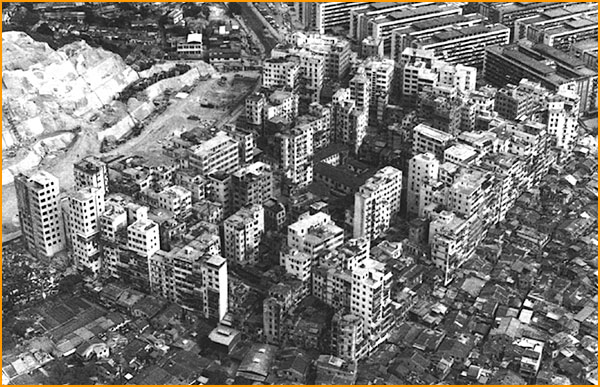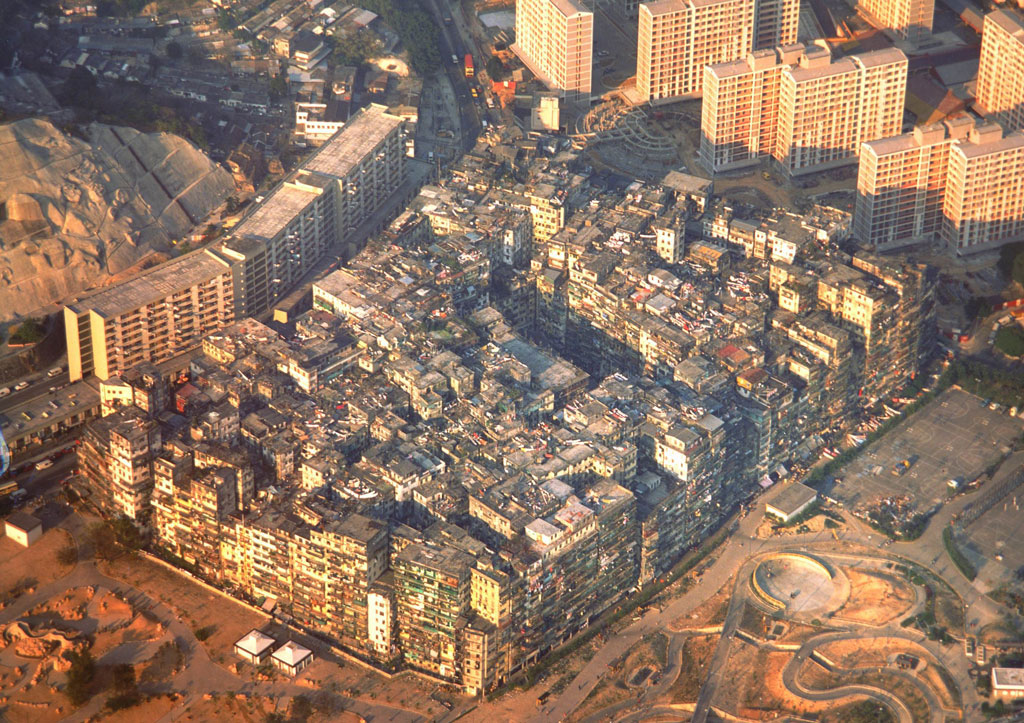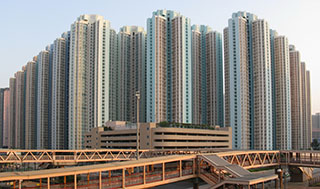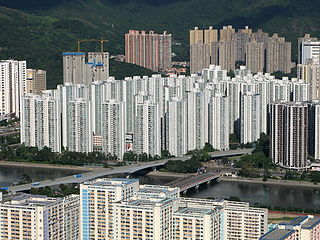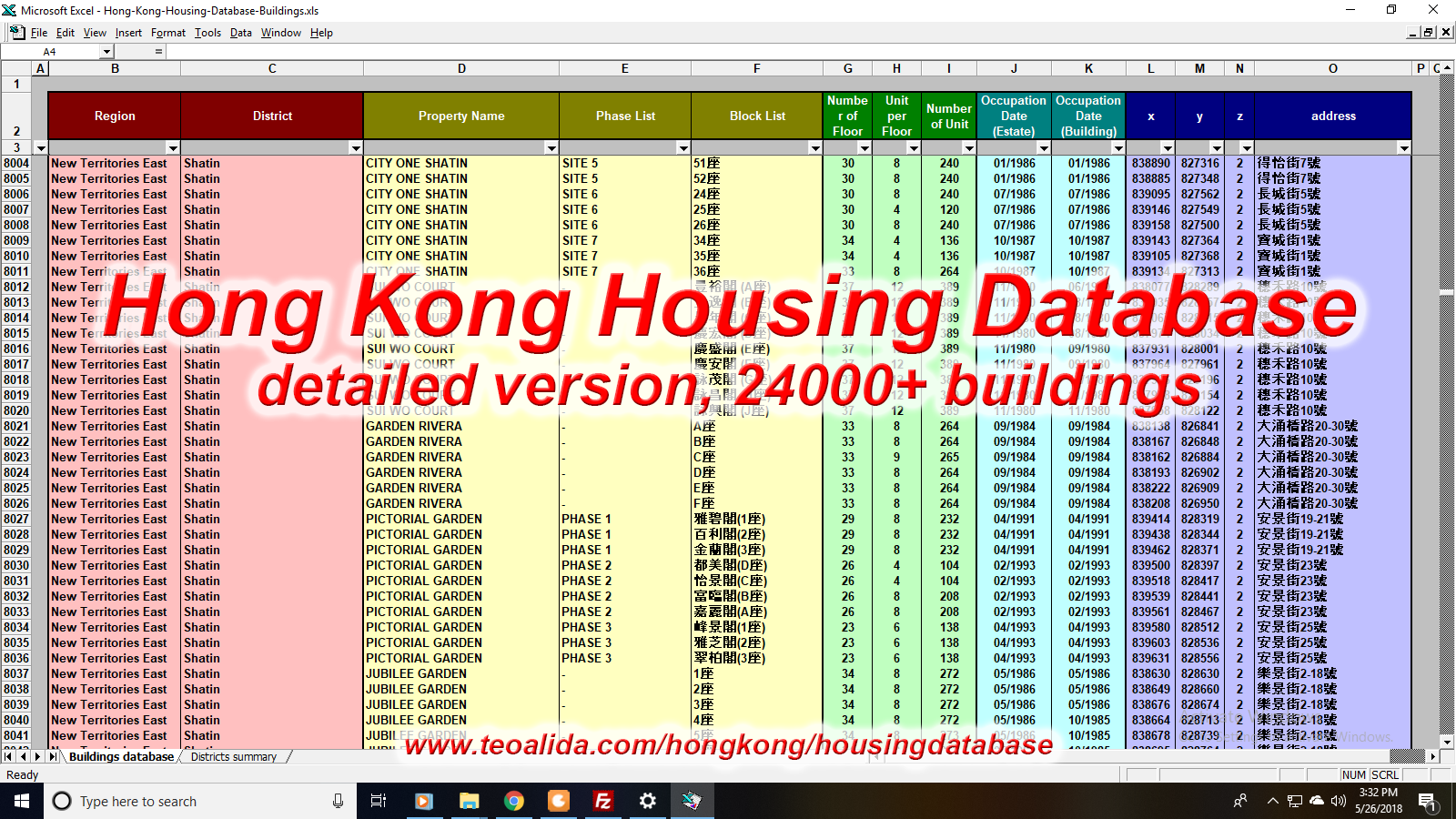A political loophole between China and Hong Kong created a 2.6 hectare Chinese enclave in Kowloon where Hong Kong authorities had no rights and Chinese authorities refused to take care. Originally a military fort, it developed into a city for refugees, criminals, illegal businesses, drug dealers, unlicensed doctors and dentists, who could operate there without threat of prosecution. Was demolished in 1993 and replaced by a park.
A government survey in 1987 estimated that 33.000 people reside within Walled City. Based on this, the density was about 1,255,000 people per square kilometer. Other figures reported 50,000 people and a ratio of 4 sqm per person. For comparison, Mong Kok District, densest area of normal Hong Kong, had in the past only 130.000 people per square kilometer.
Kowloon Walled City was originally just a military fort in China. The Convention for the Extension of Hong Kong Territory of 1898 handed additional parts of Hong Kong (the New Territories) to Britain for 99 years, but excluded the Walled City, which at the time had a population of roughly 700.
After Japanese occupation during World War II, about 2000 squatters occupied the fort by 1947.
In January 1950, a fire broke out that destroyed over 2,500 huts, home to nearly 3,500 families and 17,000 total people. The disaster highlighted the need for proper fire prevention in the largely wooden-built squatter areas, complicated by the lack of political ties with the colonial and Chinese governments. The ruins gave new arrivals to the Walled City the opportunity to build a new city.
With no government enforcement from the Chinese or the British aside from a few raids by the Hong Kong Police, the Walled City became a haven for crime and drugs. The Walled City was virtually ruled by the organised crime syndicates known as triads.
The City also underwent massive construction during the 1960s, with developers building new modular structures above older ones. The city became extremely densely populated, with over 30,000 people in 300 buildings occupying an area of about 210 by 120 meters. As a result, the city reached its maximum size by the late 1970s and early 1980s; a height restriction of 13 to 14 storeys had been imposed on the city due to the flight path of planes heading towards Kai Tak Airport. Eight municipal pipes provided water to the entire structure, although more could have come from wells. A few of the streets were illuminated by fluorescent lights, as sunlight rarely reached the lower levels due to the outstanding disregard to air rights within the city.
Although the Walled City was for many years a hotbed of criminal activity, most residents were not involved in any crime and lived peacefully within its walls. Numerous small factories and businesses thrived inside the Walled City, and some residents formed groups to organise and improve daily life there. While medical clinics and schools went unregulated, the Hong Kong government did provide some services, such as water supply and mail delivery.
The City’s dozens of alleyways were often only 1-2 m wide, and had poor lighting and drainage. An informal network of staircases and passageways also formed on upper levels, which was so extensive that one could travel north to south through the entire City without ever touching solid ground. Construction in the City went unregulated, and most of the roughly 350 buildings were built with poor foundations and few or no utilities. Because apartments were so small – a typical unit was 23 m² – space was maximized with wider upper floors, caged balconies and rooftop additions. Roofs in the City were full of television antennae, clothes lines, water tanks and rubbish, and could be crossed using a series of ladders.
Over time, both the British and the Chinese governments found the City to be increasingly intolerable despite a reduction in the reported crime rate. The quality of life in the City – sanitary conditions in particular – remained far behind the rest of Hong Kong. The mutual decision by the two governments to tear down the Walled City was announced on 14 January 1987.
The government distributed some HK$2.7 billion (US$350 million) in compensation to the estimated 33,000 residents and businesses in a plan devised by a special committee of the Hong Kong Housing Authority. Some residents were not satisfied with the compensation and were forcibly evicted between November 1991 and July 1992. After four months of planning, demolition of the Walled City began on 23 March 1993 and concluded in April 1994. Construction work on Kowloon Walled City Park started the following month.
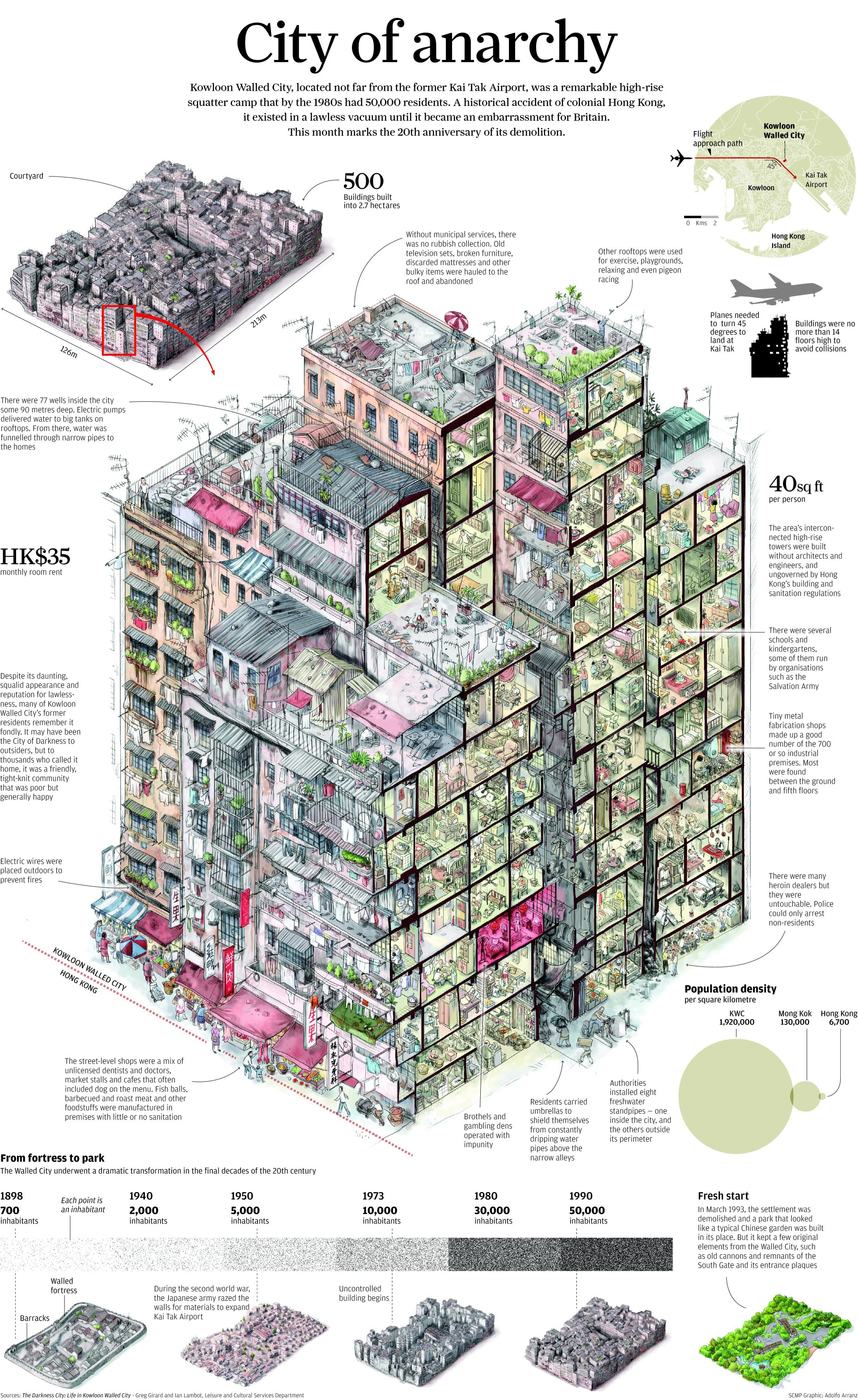
Source of above image: www.visualcapitalist.com/kowloon-walled-city/
Further read:
https://en.wikipedia.org/wiki/Kowloon_Walled_City – Wikipedia article
http://projects.wsj.com/kwc/ – article on Wall Street Journal
ttps://www.youtube.com/watch?v=Lby9P3ms11w – 40 minutes documentary
http://www.dailymail.co.uk/news/article-2139914/A-rare-insight-Kowloon-Walled-City.html
https://en.wikipedia.org/wiki/Shibam – A city in Yemen comprised by high-rise mudbrick buildings on a 350 x 250 meters shape similar with Kowloon Walled City.
